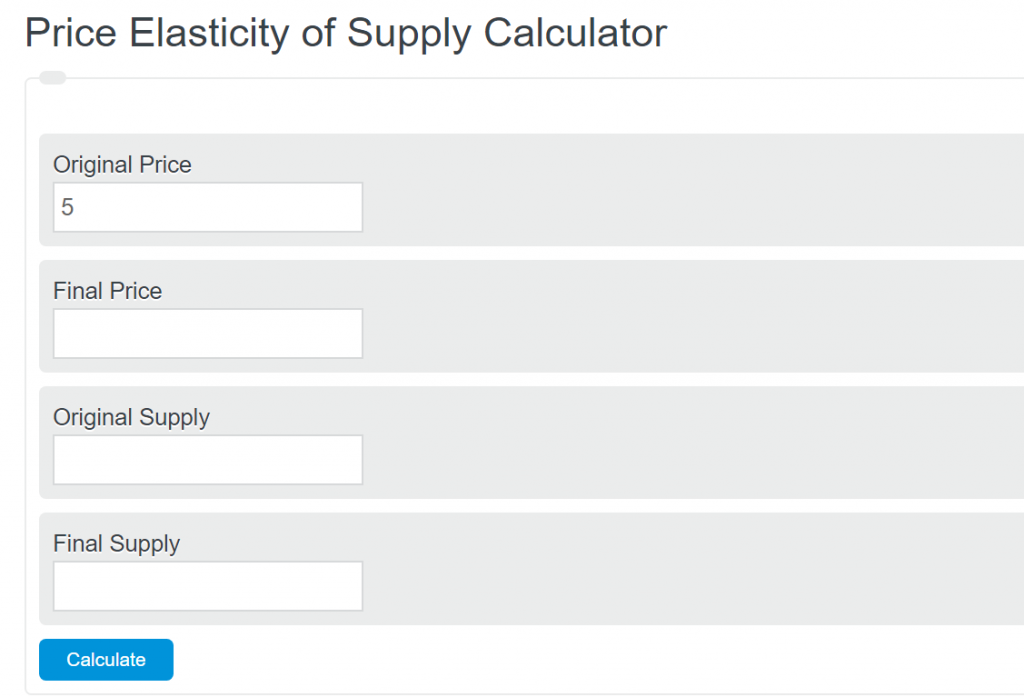Enter the total change in quantity shipped and the change in price into the calculator. The calculator will evaluate a display the price elasticity of supply.
- Price Elasticity of Demand Calculator
- Cross Price Elasticity Calculator
- Price Per Unit Calculator
- Price Variance Calculator (VMP)
Price Elasticity of Supply Formula
The following equation can be used to calculate the price elasticity of supply.
Price Elasticity of Supply = % Change in Quantity Supplied / % Change in Price
To calculate the price elasticity of supply, divide the percentage change in quantity by the percentage change in price.
Price Elasticity of Supply Definition
Price elasticity of supply is how a change in supply is affected by a change in price. Most often, it’s used to analyze how much of a product to produce based on the previous history of supply and prices.
Price Elasticity of Supply Example
How to calculate the price elasticity of supply?
- First, determine the change in quantity shipped.
Calculate the total change in percentage of the number of goods shipped.
- Next, determine the change in price.
Calculate the change in price that was associated with the change in shipped goods.
- Finally, calculate the price elasticity of supply.
Calculate the price elasticity of supply using the equation above.
FAQ
What factors affect the price elasticity of supply?
The price elasticity of supply can be affected by several factors including the availability of raw materials, the time period considered for supply adjustment, the mobility of factors of production, and the level of spare production capacity.
How does price elasticity of supply differ from price elasticity of demand?
While price elasticity of supply measures how much the quantity supplied of a good responds to a change in its price, price elasticity of demand measures how much the quantity demanded of a good responds to a change in its price. Essentially, one focuses on the supply side and the other on the demand side of the market.
Can the price elasticity of supply be negative?
No, the price elasticity of supply is usually positive because an increase in the price of a product typically leads to an increase in the quantity supplied. A negative elasticity of supply would imply that higher prices lead to a decrease in supply, which is not common in most markets.
Why is understanding the price elasticity of supply important for businesses?
Understanding the price elasticity of supply helps businesses in pricing decisions, inventory management, and in predicting the impact of changes in market conditions on supply. It aids in strategic planning, especially in determining how responsive the business can be to price changes in the market.

